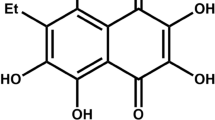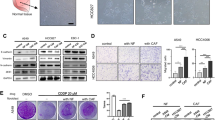Abstract
Interleukin-6 (IL-6), through activation of the signal transducer and activator of transcription 3 (STAT3) and trefoil factor family 3 (TFF3), has been implicated in the promotion of mouse biliary epithelial cell (BEC) proliferation and migration. However, it is still unclear whether the IL-6/STAT3/TFF3 signaling had similar effects on human BECs. Here, we showed that exposure of human BECs to recombinant IL-6 resulted in STAT3 phosphorylation and increased the expression of TFF3 at both mRNA and protein levels. Moreover, inhibition of STAT3 using RNA interference significantly abrogated IL-6-induced TFF3 expression. In an in-vitro wound healing model, IL-6 facilitated human BEC migration. This promotion of cell migration by IL-6 was blocked when STAT3 was knocked down. Interestingly, the addition of exogenous TFF3 could rescue the cell migration defects caused by STAT3 silencing. In conclusion, our data indicate that STAT3 plays a critical role in IL-6-induced TFF3 expression in human BECs and the IL-6/STAT3/TFF3 signaling is involved in human BEC migration and wound healing.




Similar content being viewed by others
References
Kukan M, Haddad PS (2001) Role of hepatocytes and bile duct cells in preservation-reperfusion injury of liver grafts. Liver Transpl 7:381–400
Demetris AJ, Fontes P, Lunz JG III et al (2006) Wound healing in the biliary tree of liver allografts. Cell Transplant 15(Suppl 1):S57–S65
Yokomuro S, Tsuji H, Lunz JG III et al (2000) Growth control of human biliary epithelial cells by interleukin 6, hepatocyte growth factor, transforming growth factor beta1, and activin A: comparison of a cholangiocarcinoma cell line with primary cultures of non-neoplastic biliary epithelial cells. Hepatology 32:26–35
Yasoshima M, Kono N, Sugawara H, Katayanagi K, Harada K, Nakanuma Y (1998) Increased expression of interleukin-6 and tumor necrosis factor-alpha in pathologic biliary epithelial cells: in situ and culture study. Lab Invest 78:89–100
Saito JM, Maher JJ (2000) Bile duct ligation in rats induces biliary expression of cytokine-induced neutrophil chemoattractant. Gastroenterology 118:1157–1168
Isse K, Harada K, Nakanuma Y (2007) IL-8 expression by biliary epithelial cells is associated with neutrophilic infiltration and reactive bile ductules. Liver Int 27:672–680
Yang L, Liu N, Hu X et al (2009) CK2 phosphorylates TNFAIP1 to affect its subcellular localization and interaction with PCNA. Mol Biol Rep. doi:10.1007/s11033-009-9863-1
Zhao YP, Zhang CM, Zhu C et al (2009) NYGGF4 homologous gene expression in 3T3-L1 adipocytes: regulation by FFA and adipokines. Mol Biol Rep. doi:10.1007/s11033-009-9914-7
Song XM, Wang YL, Li JG et al (2009) Effects of propofol on pro-inflammatory cytokines and nuclear factor kappaB during polymicrobial sepsis in rats. Mol Biol Rep. doi:10.1007/s11033-009-9456-z
Wu Y, Wang Y, Zhan J (2009) Effects of remifentanyl and fentanyl on LPS-induced cytokine release in human whole blood in vitro. Mol Biol Rep. doi:10.1007/s11033-008-9286-4
Rosen HR, Winkle PJ, Kendall BJ, Diehl DL (1997) Biliary interleukin-6 and tumor necrosis factor-alpha in patients undergoing endoscopic retrograde cholangiopancreatography. Dig Dis Sci 42:1290–1294
Yokomuro S, Lunz JG III, Sakamoto T, Ezure T, Murase N, Demetris AJ (2000) The effect of interleukin-6 (IL-6)/gp130 signalling on biliary epithelial cell growth, in vitro. Cytokine 12:727–730
Stahl N, Farruggella TJ, Boulton TG, Zhong Z, Darnell JE Jr, Yancopoulos GD (1995) Choice of STATs and other substrates specified by modular tyrosine-based motifs in cytokine receptors. Science 267:1349–1353
Fukada T, Hibi M, Yamanaka Y et al (1996) Two signals are necessary for cell proliferation induced by a cytokine receptor gp130: involvement of STAT3 in anti-apoptosis. Immunity 5:449–460
Nozaki I, Lunz JG III, Specht S et al (2004) Regulation and function of trefoil factor family 3 expression in the biliary tree. Am J Pathol 165:1907–1920
Chomczynski P, Sacchi N (1987) Single-step method of RNA isolation by acid guanidinium thiocyanate-phenol-chloroform extraction. Anal Biochem 162:156–159
Livak KJ, Schmittgen TD (2001) Analysis of relative gene expression data using real-time quantitative PCR and the 2(-Delta Delta C(T)) method. Methods 25:402–408
Park J, Gores GJ, Patel T (1999) Lipopolysaccharide induces cholangiocyte proliferation via an interleukin-6-mediated activation of p44/p42 mitogen-activated protein kinase. Hepatology 29:1037–1043
Chen LP, Cai M, Zhang QH, Li ZL, Qian YY, Bai HW, Wei X, Shi BY, Dong JH (2009) Activation of interleukin-6/STAT3 in rat cholangiocyte proliferation induced by lipopolysaccharide. Dig Dis Sci 54:547–554
Park J, Tadlock L, Gores GJ, Patel T (1999) Inhibition of interleukin 6-mediated mitogen-activated protein kinase activation attenuates growth of a cholangiocarcinoma cell line. Hepatology 30:1128–1133
Nozaki I, Lunz JG III, Specht S et al (2005) Small proline-rich proteins 2 are noncoordinately upregulated by IL-6/STAT3 signaling after bile duct ligation. Lab Invest 85:109–123
Hoffmann W (2005) Trefoil factors TFF (trefoil factor family) peptide-triggered signals promoting mucosal restitution. Cell Mol Life Sci 62:2932–2938
Kjellev S (2009) The trefoil factor family—small peptides with multiple functionalities. Cell Mol Life Sci 66:1350–1369
Podolsky DK, Lynch-Devaney K, Stow JL et al (1993) Identification of human intestinal trefoil factor. Goblet cell-specific expression of a peptide targeted for apical secretion. J Biol Chem 268:6694–6702
Haug IJ, Siebke EM, Grimstad IA, Benestad HB (1993) Simultaneous assessment of migration and proliferation of murine fibrosarcoma cells, as affected by hydroxyurea, vinblastine, cytochalasin B, Razoxane and interferon. Cell Prolif 26:251–261
Meyer zum Büschenfelde D, Tauber R, Huber O (2006) TFF3-peptide increases transepithelial resistance in epithelial cells by modulating claudin-1 and -2 expression. Peptides 27:3383–3390
Dürer U, Hartig R, Bang S, Thim L, Hoffmann W (2007) TFF3 and EGF induce different migration patterns of intestinal epithelial cells in vitro and trigger increased internalization of E-cadherin. Cell Physiol Biochem 20:329–346
Author information
Authors and Affiliations
Corresponding author
Electronic supplementary material
Below is the link to the electronic supplementary material.
Rights and permissions
About this article
Cite this article
Jiang, Gx., Zhong, Xy., Cui, Yf. et al. IL-6/STAT3/TFF3 signaling regulates human biliary epithelial cell migration and wound healing in vitro. Mol Biol Rep 37, 3813–3818 (2010). https://doi.org/10.1007/s11033-010-0036-z
Received:
Accepted:
Published:
Issue Date:
DOI: https://doi.org/10.1007/s11033-010-0036-z




